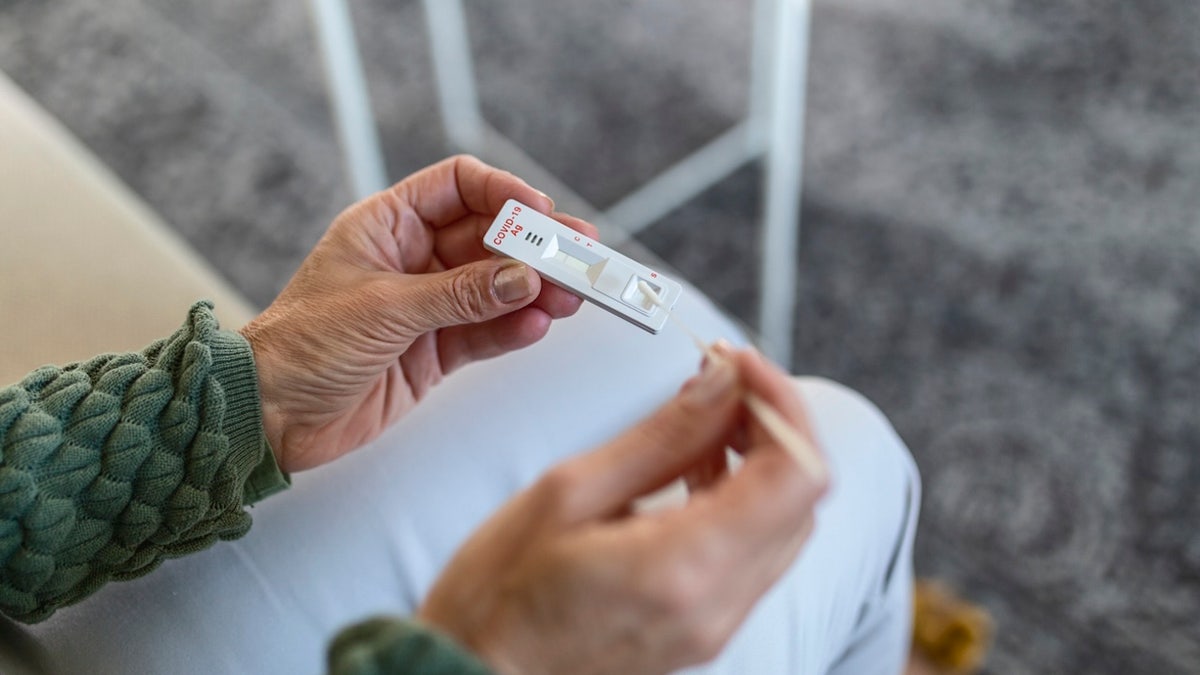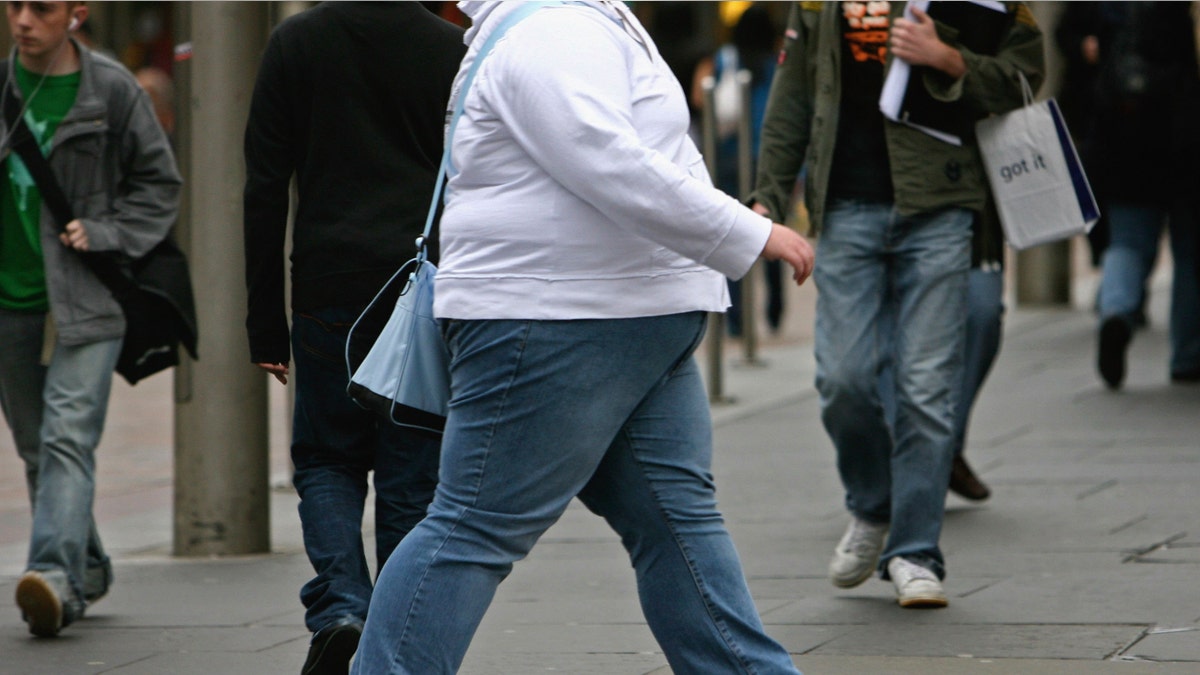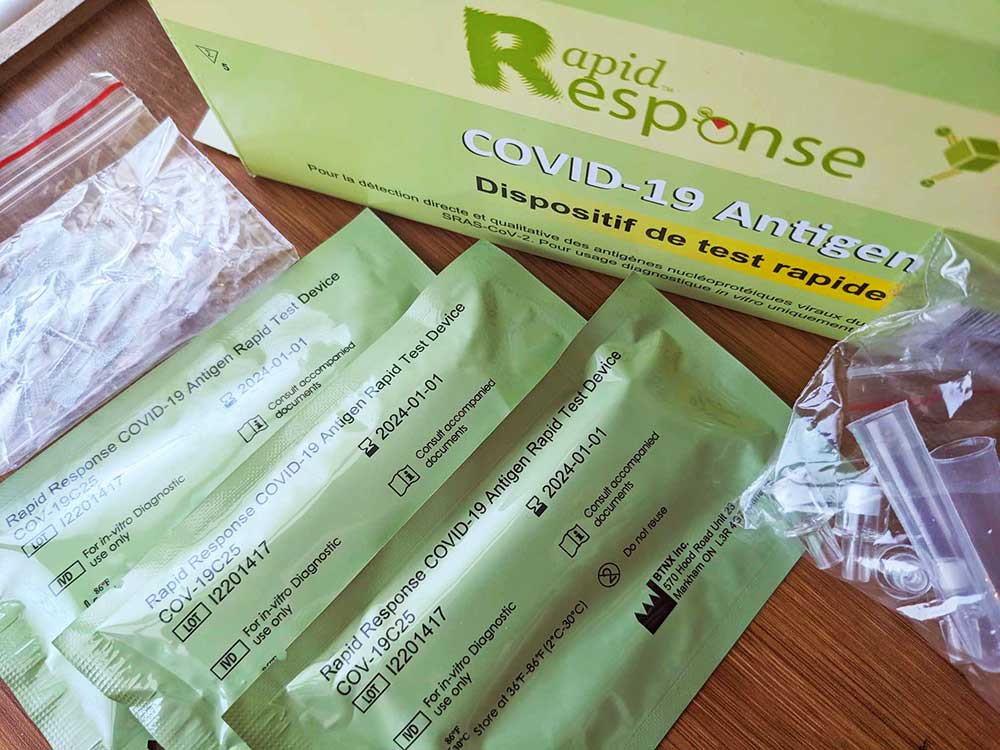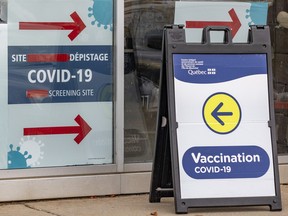Navigation
Install the app
How to install the app on iOS
Follow along with the video below to see how to install our site as a web app on your home screen.
Note: This feature may not be available in some browsers.
More options
Style variation
You are using an out of date browser. It may not display this or other websites correctly.
You should upgrade or use an alternative browser.
You should upgrade or use an alternative browser.
Covid-19 News and Discussions
- Thread starter Yommie
- Start date
Yommie
SpeedLimited
- Oct 2, 2013
- 64,173
- 37,187
- Country of Origin

- Country of Residence

- Thread starter
- #2,057

COVID-19 linked to increased risk of hearing loss in young adults, study finds
Researchers in South Korea found that young adults who recovered from COVID-19 are at significantly higher risk of experiencing hearing loss and sudden sensorineural hearing loss compared to those who never had the virus.
COVID-19 linked to increased risk of hearing loss in young adults, study finds
.jpg)
 Study: Incidence of hearing loss following COVID-19 among young adults in South Korea: a nationwide cohort study. Image Credit: Jaromir Chalabala / Shutterstock
Study: Incidence of hearing loss following COVID-19 among young adults in South Korea: a nationwide cohort study. Image Credit: Jaromir Chalabala / ShutterstockA major study finds that COVID-19 triples the risk of hearing loss in young adults, highlighting an urgent need to investigate the long-term effects of the virus on auditory health amid concerning new evidence of sudden sensorineural hearing loss among those infected.
In a recent study published in the journal eClinicalMedicine, researchers from South Korea conducted a population-based study among young adults to determine the association between coronavirus disease 2019 (COVID-19) and hearing loss, including sudden sensorineural hearing loss.Background
The COVID-19 pandemic affected over 775 million individuals worldwide and resulted in over seven million deaths. The post-infection sequelae, commonly known as long coronavirus disease (long COVID), continues to impact a significant portion of the individuals who recovered from the severe acute respiratory syndrome coronavirus 2 (SARS-CoV-2) infections. Furthermore, the symptoms of long COVID impact various organ systems, such as the cardiovascular, gastrointestinal, pulmonary, renal, and neural systems.Studies have reported cases of sensorineural hearing loss and sudden sensorineural hearing loss associated with COVID-19, which suggests an impact of COVID-19 on the brainstem. This also indicates that hearing loss could be one of the non-specific COVID-19 symptoms.
Viral and bacterial meningitis, where meningeal inflammation is believed to spread to the cochlea, has been reported to cause sudden hearing loss. Numerous recent cases among young adults have suggested that hearing loss could be a serious COVID-19-associated public health issue, and it is vital to study this association at a population scale to account for confounding factors.
About the study
In the present study, the scientists used data from the Korea Disease Control and Prevention Agency’s COVID-19 registry and the National Health Insurance Service database to obtain information on diagnoses of COVID-19, as well as types, dates, and vaccination doses.The insurance service database provided a wide range of data, including sociodemographic factors, health examination results, outpatient visits, hospitalization and prescription records, and medical treatments.
The study only included young adults between the ages of 20 and 38 and excluded all individuals with a hearing loss history. The exposure in the study was SARS-CoV-2 infection confirmed using real-time reverse-transcriptase polymerase chain reaction (rRT-PCR) analysis of oro- or nasopharyngeal swabs.
The outcomes examined in the study consisted of composite hearing loss based on the International Statistical Classification of Diseases Tenth Revision codes. Sudden sensorineural hearing loss was the secondary outcome examined in the study. To determine the risk of sudden sensorineural hearing loss, follow-ups were conducted until a diagnosis of hearing loss, death, or end of the study.
Hearing loss was determined based on the inability to hear sounds below 25 decibels, and sudden sensorineural hearing loss was diagnosed based on the rapid development of hearing loss below 30 decibels within 72 hours.
 Spectroscopy Applications in the Environment eBook eBook Compilation of the top interviews, articles, and news in the last year.Download the latest edition
Spectroscopy Applications in the Environment eBook eBook Compilation of the top interviews, articles, and news in the last year.Download the latest editionFactors such as age, sex, household income, and COVID-19 vaccination status were included as covariates. Additional covariates included body mass index, fasting serum glucose levels, systolic blood pressure, alcohol consumption, smoking status, and physical activity levels.
The researchers performed various statistical and sensitivity analyses to determine the association between SARS-CoV-2 infections and an increased risk of hearing loss or sudden sensorineural hearing loss among young adults while accounting for all the demographic, physiological, and lifestyle-related covariates.
Results
The study found that the risk of hearing loss or sudden sensorineural hearing loss was higher after a SARS-CoV-2 infection among young adults. Compared to individuals who never had COVID-19, those who recovered from COVID-19 were at a 3.44 times higher risk of hearing loss and a 3.52 times higher risk of sudden sensorineural hearing loss.Even after adjusting for covariates linked to lifestyle and metabolic factors, the association was significant. The researchers also discussed some proposed hypotheses explaining the association between SARS-CoV-2 infections and hearing loss.
The inner ear is believed to be susceptible to viruses, and infections from viruses belonging to Paramyxoviridae and Herpesviridae families, as well as from hepatitis, influenza, and Lassa viruses, have been linked to neurological symptoms such as sudden sensorineural hearing loss, along with facial paralysis and anosmia. Additionally, viral infections can also damage the perilymphatic and cochlear tissue, which has previously been observed in cases of cochleitis and cochlear nerve neuritis.
Murine model studies where mice were infected with the herpes simplex virus showed evidence of hearing loss after the viral infection. The infection of epithelial cells inside the stria vascularis of the cochlear duct, the death of uninfected cells, and the apoptosis of cells infected in the organ of Corti are believed to contribute to hearing loss.
Other studies have also reported the persistence of SARS-CoV-2 in the ear long after recovering from the initial infection, suggesting that the virus’s ability to remain in tissues for the long term could be an underlying reason for hearing loss.
Conclusions
Overall, the findings suggested a significant association between COVID-19 and the development of hearing loss in young adults. However, the researchers believe that limitations such as the absence of objective audiological data, the retrospective study design, and the inability to generalize these findings to broader populations warrant careful interpretation of these results and necessitate further research on the subject.
Last edited:
Yommie
SpeedLimited
- Oct 2, 2013
- 64,173
- 37,187
- Country of Origin

- Country of Residence

- Thread starter
- #2,058
‘Most people are confused’: What to know about the latest Covid shot
While the risk of hospitalization and death is nowhere near what it was in 2021, there is still a danger, particularly for the elderly or those with compromised immune systems.
CDC Director Mandy Cohen recommends that everyone older than 6 months get the new Covid (and flu) shot in September or October. | Shutterstock
By Chelsea Cirruzzo
08/29/2024 05:00 AM EDT
For most, the virus has become background noise, but as case counts rise alongside the back-to-school season, the potential for spread grows exponentially.
There are “high” or “very high” levels of Covid in the wastewater in nearly every state, according to the Centers for Disease Control and Prevention. At least one estimate suggests that as much as 2.5 percent of the population is infected with Covid.
Even the Democratic National Convention turned into a superspreader event.
Fauci fends off GOP attacks on Covid origins
Share
Play Video
And despite the virus’ prevalence — and the persistent threat of long Covid — public health officials are contending with a myriad of obstacles as they try to boost the population’s defenses, including dwindling enthusiasm for the shots, lackluster testing and the end of a program meant to help the uninsured get vaccinated.
“One of the challenges of today is just that people aren’t going to get vaccinated,” said Michael Osterholm, an epidemiologist and director of the University of Minnesota’s Center for Infectious Disease Research and Policy. “Most people are confused. They don’t really understand what’s happening or what the risk to them is,” when it comes to Covid.
More than 1 in 5 Americans falsely think it’s safer to get a Covid infection than a vaccine, a rise from 10 percent in April 2021, according to a recent poll by the Annenberg Public Policy Center.
Last year, 22.5 percent of adults and 14.4 percent of children received the updated Covid vaccine, according to the CDC.
While the risk of hospitalization and death is nowhere near what it was in 2021, there is still a danger, particularly for the elderly or those with compromised immune systems.
“There is no doubt that this is better than we were in 2020 or 2021, but that doesn’t mean it’s acceptable or good enough,” said Dr. Jerome Adams, who served as surgeon general during the Trump administration.
Here is what you need to know about the vaccine:
How effective is the vaccine?
The FDA asked the vaccine manufacturers in June to incorporate the KP.2 strain into their formulas because it was the prevalent form of the virus at the time. Pfizer-BioNTech’s and Moderna’s vaccines both target KP.2, but related subvariants, KP.3 and KP.3.1.1 — now the most prevalent strains — are estimated to account for more than half of U.S. cases, according to the CDC.

Democrats Are Already Buzzing About a Merrick Garland Successor
Trump indicted again in election subversion case brought by Jack Smith
Peggy Flanagan is poised to become the country’s first female Native American governor
‘He’s got to pay a price’: Unaired footage reveals Nancy Pelosi’s Jan. 6 fury
Harris gains on Trump in Sun Belt states where Biden struggled, Fox poll finds
Osterholm said the virus has changed quickly in recent years, which means by the time a new vaccine comes out, the strain it was engineered against is no longer dominant.
That doesn’t mean it’s ineffective, said CDC Director Mandy Cohen, who recommended everyone older than 6 months get their Covid (and flu) shot “in September or October ahead of the expected increases in both viruses this winter.”
Some public health experts suggest going even earlier, if possible, because of the surge in cases.
“The whole point of getting a vaccine is you’re supposed to get it before you get infected or exposed,” Adams said.
Last year’s vaccine offered 54 percent protection against symptomatic Covid infections, according to a CDC study.

Pre-loaded syringes of the Covid-19 vaccine are ready for use in New Orleans on Jan. 25, 2022. | Ted Jackson/AP
When should you get a shot if you’ve recently been infected with Covid?
Adams said this is a question he has fielded often in the past several weeks as people get Covid amid the summer surge.
The CDC recommends that people who recently had Covid may consider waiting to get an updated dose for three months after symptom onset or a positive test but can get their dose as soon as their symptoms resolve.
Is the Covid surge peaking?
It depends on where you live, said Dr. Demetre Daskalakis, director of the CDC’s National Center for Immunization and Respiratory Diseases. About half the states show growth in viral transmission, but that’s much better than earlier this month when nearly every state reported increases.
“We’re not out of the woods yet,” he said during a press briefing last week. “But we are potentially seeing some indication of a plateauing.”
Do we have a good sense of how widespread Covid is?
Wastewater surveillance can help provide clues, but public health officials can’t track the virus as well as they did during the height of the pandemic. Testing and reporting aren’t happening on nearly the same level.
“What’s interesting is we’re in 2024, and there still does not seem to be a national testing strategy in terms of who should get tested, distribution, reporting of testing results, et cetera,” Adams said. “The CDC … could and should do more to help us gain visibility into the problems that are occurring out there by really developing and communicating an overall testing strategy.”
What about the cost?
Most insurance plans cover the vaccine at no charge under the Affordable Care Act. But, for the uninsured, that will likely be different this year. A federal program to provide free Covid shots for the uninsured will end this week. Local health officials in several states told POLITICO they plan to or are seriously considering purchasing doses to offer uninsured residents. But few expect to have enough cash to buy the amount they believe they will need.
While the CDC last week said it would send $62 million to local and state governments to help them purchase vaccines, that sum is a fraction of the $1.1 billion allocated for the Bridge Access Program — which began last September and got 1.5 million Americans vaccinated.
And local health officials still don’t know who gets that money or how much they might get. And if they do get money, they don’t know whether it can be used to purchase the actual vaccine or must be used for administrative purchases like staffing.
“It’s not enough, and we need to learn more about what it’s meant to support,” Chrissie Juliano, executive director of the Big Cities Health Coalition, told reporters Tuesday.
A Covid vaccine can cost upwards of $100 without health insurance, and some public health officials worry that the end of the Bridge Access Program will temper already lackluster enthusiasm.
“We are definitely experiencing Covid fatigue,” said Crystal La Tour Rambaud, who manages the vaccine program at the Pima County Health Department in Arizona. “The population we are concerned about are the people on the fence. They are not completely anti-[vaccine], and they are not completely all about it. And for those groups of people, it’s a very small thing that could tip the scale in the direction of not being vaccinated.”
She said Pima plans to buy enough doses for its entire uninsured population.
“But it’s going to have to come out of the same budget that a lot of our other vaccine projects come out of,” she said.
Yommie
SpeedLimited
- Oct 2, 2013
- 64,173
- 37,187
- Country of Origin

- Country of Residence

- Thread starter
- #2,059
Summer COVID surge shows we may have to return to 2020 pandemic measures
by Aron Solomon, opinion contributor - 08/29/24 9:00 AM ETAs summer 2024 draws to a close, the U.S. finds itself once again grappling with a surge in COVID-19 infections.
This wave has taken many people by surprise, particularly as the country has largely consigned the pandemic to the past. While public life has pretty much returned to pre-pandemic norms — something almost none of us would have believed in the summer of 2020 — the virus itself has not.
Mutations of the virus continue to occur, and new variants are emerging, posing ongoing challenges to public health and safety. As we look ahead to the remainder of 2024 and into early 2025, we need to take stock of where we are, understand the factors driving this resurgence and better anticipate how the pandemic might evolve.
The recent surge in COVID-19 cases has disrupted summer travel plans, overwhelmed healthcare facilities in certain areas, and left many Americans dealing with the familiar symptoms of fever, cough and fatigue. The summer months, typically associated with lower respiratory virus activity, have instead seen a significant uptick in COVID-19 infections. Several factors contribute to this unexpected surge.
One factor is the high transmissibility of newer variants. The virus has continued to mutate, with certain variants displaying enhanced ability to spread, even among populations with high vaccination rates. While vaccines remain effective at preventing severe disease and death, breakthrough infections are becoming more common, especially as immunity from earlier vaccinations wanes.
Second, the widespread relaxation of public health measures has created an environment conducive to transmission. Mask mandates, social distancing guidelines and restrictions on large gatherings have all but disappeared. This return to normalcy, while massively psychologically and economically beneficial, has provided the virus with ample opportunities to spread.
Finally, the pervasive sense of pandemic fatigue has led to a serious decline in vigilance. Many people, weary of the pandemic’s disruptions to their lives, have become markedly less cautious. This complacency, coupled with the underestimation of the virus’s ability to adapt, has allowed COVID-19 to regain a foothold.
The federal government’s response to the latest surge has been tepid at best. After years of intense focus on COVID-19, there is a palpable desire in Washington to move on. This has resulted in a fragmented approach, with responsibility for managing the current wave largely devolving to state and local governments. While some have reinstated certain precautions, others have continued with business as usual, leading to inconsistent messaging and outcomes.
Moreover, the federal government’s decision to end the public health emergency earlier this year has had unintended consequences. The end of the emergency declaration led to a reduction in federal funding for testing, contact tracing, and vaccination efforts, just as these tools are once again needed. The lack of a coordinated national strategy has hampered efforts to control the surge and has left healthcare providers scrambling to manage increased caseloads with fewer resources.
Looking ahead, the trajectory of the pandemic remains uncertain, but there are several key trends and scenarios to consider.
The virus is likely to continue mutating, with new variants emerging that could potentially evade immunity from previous infections or vaccinations. This means that COVID-19 will remain a moving target, requiring ongoing surveillance and adaptation of public health strategies. The development of updated vaccines and treatments will be critical in staying ahead of the virus, but the speed at which these can be rolled out will determine their effectiveness.
We can and should also expect periodic surges in COVID-19 cases, particularly in the fall and winter months, when respiratory viruses typically thrive. These surges may not reach the levels seen during the height of the pandemic, but they could still cause significant disruption, particularly in areas with low vaccination rates or limited healthcare capacity. Localized outbreaks, driven by specific variants or super-spreader events, will likely become regular features of the landscape.
The healthcare system, already strained from years of dealing with the pandemic, is also going to face additional pressure if the current surge continues into the fall and winter. Hospitals and clinics will need to balance the demands of COVID-19 patients with the resumption of regular medical care that had been postponed during the pandemic’s earlier phases. This balancing act could lead to increased wait times, resource shortages and burnout among healthcare workers.
And we can’t underestimate how public fatigue with COVID-19 precautions will grow, making it more difficult to reimpose restrictions or encourage preventive behaviors. This resistance could be particularly strong in regions that have experienced relatively low case numbers or where political leaders have downplayed the severity of the virus. Overcoming this fatigue will require clear and consistent communication from public health officials, as well as community-level engagement to reinforce the importance of ongoing vigilance.
We are also making a big mistake if we ignore the economic and social implications of continued COVID-19. The virus’s persistence may lead to renewed disruptions in the travel industry, supply chains and workforce participation. Along with this, the psychological toll of a prolonged pandemic, with the associated uncertainty and anxiety, could have lasting effects on mental health and societal cohesion. Policymakers will need to address these challenges proactively, with a focus on resilience and support for affected populations.
So where do we realistically go from here, given that it is clear that COVD-19 is far from over? While much progress has been made in terms of vaccination and treatment, the current surge is a stark reminder that complacency is not an option. The road ahead will require a renewed commitment to public health, both from government leaders and from individuals.
We all need to prepare for not only the possibility of continued disruptions but for another new normal that might be a little closer to 2020 than how we’ve recently been living. That means preparing for future waves and the long-term implications of a world in which COVID-19 remains a persistent, if manageable, threat.
Yommie
SpeedLimited
- Oct 2, 2013
- 64,173
- 37,187
- Country of Origin

- Country of Residence

- Thread starter
- #2,060
Low Turnout Expected for Updated COVID Vaccine
55 mins ago1 Min Read

Newsday
Dr. Martine Hackett, associate professor and chair of Hofstra’s Department of Population Health, told Newsday that she believes many people will not get the recently updated vaccine for COVID-19. Less than a quarter of adults and less than 15 percent of children received last year’s vaccine.
“I would predict that there would be much less of an uptake, in part because folks have gotten COVID in big numbers over the last few months; there was a summer surge. So some people might feel like they don’t need the vaccine because they feel protected from their recent infection,” she said. “But just in general, there’s just a lack of urgency around the need to get the most recent version of the vaccine.”
Yommie
SpeedLimited
- Oct 2, 2013
- 64,173
- 37,187
- Country of Origin

- Country of Residence

- Thread starter
- #2,064

Obesity makes people more likely to catch COVID, study suggests: ‘Indisputable relationship’
Patients with obesity were found to have a 34% higher risk of contracting SARS-CoV-2 compared to non-obese people, researchers found. Doctors discuss why a higher BMI makes people more susceptible.
Obesity makes people more likely to catch COVID, study suggests: ‘Indisputable relationship’
In addition to making symptoms worse, obesity is now linked to higher risk of initial infection
By Melissa Rudy Fox NewsPublished August 29, 2024 1:51pm EDT
close
Dr. Nicole Saphier reveals connection between obesity, rise in cancer diagnoses
Obesity has often been described as a "gateway disease" leading to other conditions — and one of those is COVID-19, according to a new study from Brigham and Women's Hospital and Harvard Medical School.Patients with obesity were found to have a 34% higher risk of contracting SARS-CoV-2 compared to non-obese people, researchers found.
The study analyzed over 72,000 patients from Brigham and Women's Hospital in Boston, all of whom had either been exposed to COVID or tested positive for the virus between March 2020 and Jan. 2021, according to a press release.

IS MPOX THE NEXT COVID? INFECTIOUS DISEASE EXPERTS ADDRESS PANDEMIC POTENTIAL
The findings were published in PNAS Nexus on Tuesday.
For adults, obesity is defined as a body mass index (BMI) of 30 or greater, aligned with the World Health Organization (WHO)’s guidelines.
Obesity has often been described as a "gateway disease" leading to other conditions — and one of those is COVID-19, according to a new study. (iStock)
For children, the obesity guideline was a growth curve above the 95th percentile, per the criteria from the American Academy of Pediatrics (AAP).
Obesity rates among younger people are expected to approach 50% by 2030, according to the researchers.
"Obesity is not only a risk factor for worsened outcomes, but also increases the risk for infection upon exposure," the researchers wrote in the study findings.
NEW COVID VACCINES GET FDA APPROVAL FOR 2024-2025 SEASON

"Identifying such populations early will be crucial for curbing the spread of this infectious disease."
The results of the study were not surprising to medical experts, including Dr. Rekha Kumar, chief medical officer of Found, a telehealth weight care provider.

"Obesity is not only a risk factor for worsened outcomes, but also increases the risk for infection upon exposure," the researchers wrote. (iStock)
"We've known for some time that obesity is associated with increased severity of COVID-19, including higher risks of hospitalization, ICU admission and death," Kumar, who was not involved in the research, told Fox News Digital. She is also a practicing endocrinologist in New York City at NewYork-Presbyterian.
"This study extends our understanding by suggesting that obesity also increases the risk of initial infection."
Walter Gaman, M.D., of Executive Medicine of Texas, was not involved in the study, but also noted that the connection between obesity and COVID is "no surprise.""Whenever you have an increased inflammatory process in the body, it greatly affects the immune system."
"We know that obesity is associated with inflammation and chronic diseases," he told Fox News Digital.
"Whenever you have an increased inflammatory process in the body, it greatly affects the immune system," he went on. "This is congruent with the findings of the study."

"There is an indisputable relationship between obesity and the immune system, chronic disease and early death," a doctor said. (iStock)
Underweight individuals were also at great risk at the height of the pandemic, Gaman pointed out.
"It would be interesting to see a study that addresses both overweight and underweight correlations to COVID," he added.
Why does obesity increase COVID risk?
There are several potential reasons for the link, according to Kumar, ranging from impaired immune function to coexisting conditions.
Obesity rates among younger people are expected to approach 50% by 2030, according to the researchers. (Getty Images)
"Obesity is associated with chronic low-grade inflammation and alterations in immune responses, which can compromise the body's ability to fight off infections effectively," she said.
"Additionally, obesity is often associated with other coexisting conditions, including diabetes and hypertension, which are themselves risk factors for COVID-19."
CLICK HERE TO GET THE FOX NEWS APP
Based on the findings, Gaman recommended that people obtain and maintain a healthy weight — not just for cosmetic reasons, but to improve their health.
"There is an indisputable relationship between obesity and the immune system, chronic disease and early death," he confirmed.

A doctor recommends that people with obesity continue to take extra precautions to avoid COVID-19 exposure — and that they speak with a medical provider if they need more specific guidance. (iStock)
"Regular exercise and a healthy diet are the first lines of defense when it comes to strengthening the immune system."
Kumar recommends that people with obesity continue to take extra precautions to avoid COVID-19 exposure — and that they speak with a medical provider if they need more specific guidance.
Potential limitations
The researchers acknowledged several limitations of the study, primarily that it relied on people self-reporting their exposure to the virus.Also, all patients are from the Mass General Brigham health care network, which means they may not be representative of a wider population.
Yommie
SpeedLimited
- Oct 2, 2013
- 64,173
- 37,187
- Country of Origin

- Country of Residence

- Thread starter
- #2,067

Health Canada Says Expired COVID Tests Are Still Good | The Tyee
Many kits in BC are stamped with an April 2024 expiry date. They’re still ‘safe and accurate’ until October.
Health Canada Says Expired COVID Tests Are Still Good
Many kits in BC are stamped with an April 2024 expiry date. They’re still ‘safe and accurate’ until October.

Michelle Gamage TodayThe Tyee
Michelle Gamage is The Tyee’s health reporter. This reporting beat is made possible by the Local Journalism Initiative.

COVID-19 rapid antigen tests that expired this spring can still be used to accurately detect a COVID infection for the next couple of months, according to the British Columbia Ministry of Health.
Announcements, Events & more from Tyee and select partners
CONTEST: Win Two Tickets to ‘Eyes of the Beast’

Two Tyee readers will secure seats to the visceral production in Victoria that brings viewers into the lived experience of climate disaster.
Tests that show an expiration date of April 2024 were given a six-month extension by Health Canada. These tests will be “safe and effective” until at least October, the ministry told The Tyee in an email.
As of July 14, the provincial government had around 900,000 COVID-19 rapid antigen tests sitting in storage, the ministry said.
Tests are stored at provincial warehouses and pharmacy distributor inventories and “many” of the tests are stamped with an April 2024 expiry date, it continued.
The ministry said it would continue to distribute the tests free of charge through community pharmacies and by request to groups such as long-term care and assisted living facilities and organizations with clinically extremely vulnerable people, such as BC Cancer patients.
These tests will be distributed “for the upcoming respiratory season” and the government will “procure tests as necessary,” the ministry said.
The ministry added that it is working collaboratively with Health Canada to “explore options” for how to manage expiring tests.
It’s important to stay home when you’re sick and to stay away from others, especially people who are immunocompromised or seniors, until you are feeling better, the ministry added.
Campaign stories you won’t read anywhere else
Sign up for The Run, our free election newsletter.
Subscribe
Anyone experiencing a viral illness should rest until they feel healthy enough to participate in their regular daily activities and they no longer have a fever (including a fever they are effectively managing with medications like Tylenol).
But just because a rapid antigen test did not find COVID doesn’t mean it’s not there.

No Longer an Official Emergency, COVID Remains a Crisis
read moreAt least one company that produced rapid antigen tests has been caught fudging the data on how accurate its test was.
The BTNX rapid antigen tests could detect a highly infectious COVID infection but were less dependable in other cases, according to reporting by Global News.
This meant the test was more likely to find false negatives, where the test said a person did not have COVID when they actually did.
This test did not produce false positives. In other words, if a person took the test and it said they had COVID, it was accurate.
Even if a person tests negative, they should stay home until symptoms go away, the ministry said.
COVID rapid antigen tests are not designed for at-home use for kids five and under. If the nose swab is done by someone other than a health-care provider, it can injure a child’s nose, the ministry added.
![[Tyee] [Tyee]](https://thetyee.ca/design-article.thetyee.ca/ui/img/yellowblob.png)
Yommie
SpeedLimited
- Oct 2, 2013
- 64,173
- 37,187
- Country of Origin

- Country of Residence

- Thread starter
- #2,070

Quebec COVID-19 summer wave more lethal than last year's
The disease has killed 34 Quebecers in their 50s in the past 12 months, and nine in their 40s.
Quebec COVID-19 summer wave more lethal than last year's
The disease has killed 34 Quebecers in their 50s in the past 12 months, and nine in their 40s.Author of the article:
Aaron Derfel • Montreal Gazette
Published Aug 29, 2024 • Last updated 14 hours ago • 3 minute read
Join the conversation

Article content
Quebec’s summer COVID-19 wave has proved to be far deadlier than last year’s, defying expectations that the virus that causes it is somehow growing milder, suggest the latest Health Ministry figures.As the KP.3.1.1. variant has become predominant in Quebec, as is the case elsewhere in North America, the province recorded 117 deaths linked to COVID-19 for the month of August (as of Aug. 24), compared with 88 such fatalities for the whole month last year. In July, there were 109 deaths compared with 46 for the same month in 2023.
- Preliminary research has shown that although the KP.3.1.1 strain is not more virulent than previous variants, it is more contagious. In Quebec, this is reflected in the fact that the positivity rate among those tested for COVID-19 is now 23.7 per cent, the highest it’s been since the winter resurgence of December 2023.
Source: the public health institute of Quebec.
In addition, Quebec declared a total of 1,322 hospitalizations with and for COVID-19 as of Aug. 27, compared with 985 hospitalizations on the corresponding date last year. The province was also battling outbreaks in 159 long-term care centres and hospitals as of Aug. 19 (the most recent date available), in contrast with fewer than a hundred on the same date last year.
“I think those numbers are concerning,” said Dr. Donald Vinh, an infectious diseases specialist at the McGill University Health Centre. “First, SARS-COV2 (the virus that causes COVID) is still circulating. Secondly, there clearly remain many people at risk for severe disease.”
More Quebecers in their 80s died from COVID-19, followed by those in their 90s, the numbers show. However, the multi-system disease has also killed people in younger age groups, including 34 in their 50s, nine in their 40s and one in their 30s, according to Quebec’s public health institute. (Those figures run from Aug. 27 last year to the same date this year.)
Today's One Read
Get the most interesting story of the day.
Sign Up
By signing up you consent to receive the above newsletter from Postmedia Network Inc.
Article content
Advertisement 3
STORY CONTINUES BELOW
Article content
“The virus is not becoming more benign,” Vinh explained. “Some had proposed that the virus would become somehow attenuated as it propagated through human populations, which is a notion that is erroneously extrapolated by what is seen in certain settings, where a microbe can be passaged in cells, and over many passages/generations, a weaker version could be appear. That doesn’t work in humans because humans are not single-celled organisms in a test tube, and humans very much can get sick in the process of propagation/passaging as the mortality rates would suggest.”
Despite the higher COVID-19 summer mortality rates in Quebec this year, more people died from the disease in the months of July and August of 2022, when Omicron subvariants first swept the province. But the latest figures nonetheless do not augur well for the the fall season as more people head indoors and the school season resumes.
Just last week, the Laval health authority re-introduced masks for employees and patients in its health facilities. However, a spokesperson for the Health Ministry told The Gazette the government is not planning any new public-health measures.
Advertisement 4
STORY CONTINUES BELOW
Article content
“In the context of the back-to-school period, the (Health Ministry) continues to monitor the epidemiological situation of COVID-19 closely,” Francis Martel said in an email. “Although this no longer requires the emergency health measures that were in place at the time of the pandemic (such as isolation measures or travel restrictions, for example), individual actions to prevent the transmission of infections remain important.”
Meanwhile, Health Canada is reviewing submissions by Pfizer and Moderna for updated vaccines that target the KP.2 variant. Although not an exact match for KP.3.1.1, those shots should nonetheless provide protection against severe disease that may be caused by the latest variants. In July, Quebec’s immunization committee released its COVID-19 vaccine guidelines, recommending the shots for people who are at least 60; those living in long-term care homes; people who are living with chronic illnesses; those who are pregnant; and health-care workers.
Users who are viewing this thread
Total: 3 (members: 0, guests: 3)
Pakistan Defence Latest
-
Reports: Bajwa agreed to curtail Pakistan’s ballistic missile program (10 Viewers)
- Latest: FuturePAF
-
-
-
Indian general praises professionalism of Pakistani peacekeepers in South Sudan (3 Viewers)
- Latest: onlinpunit
-
Country Watch Latest
Latest Posts
-
-
Reports: Bajwa agreed to curtail Pakistan’s ballistic missile program (10 Viewers)
- Latest: FuturePAF
-
-
-

